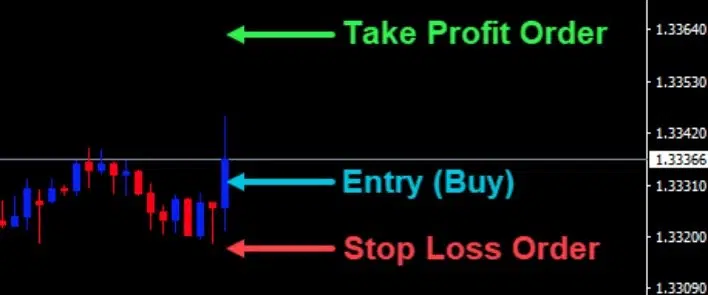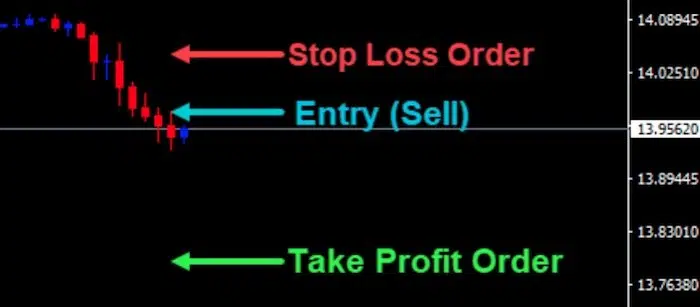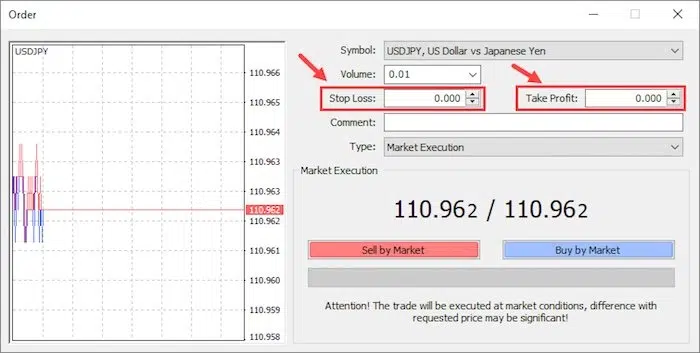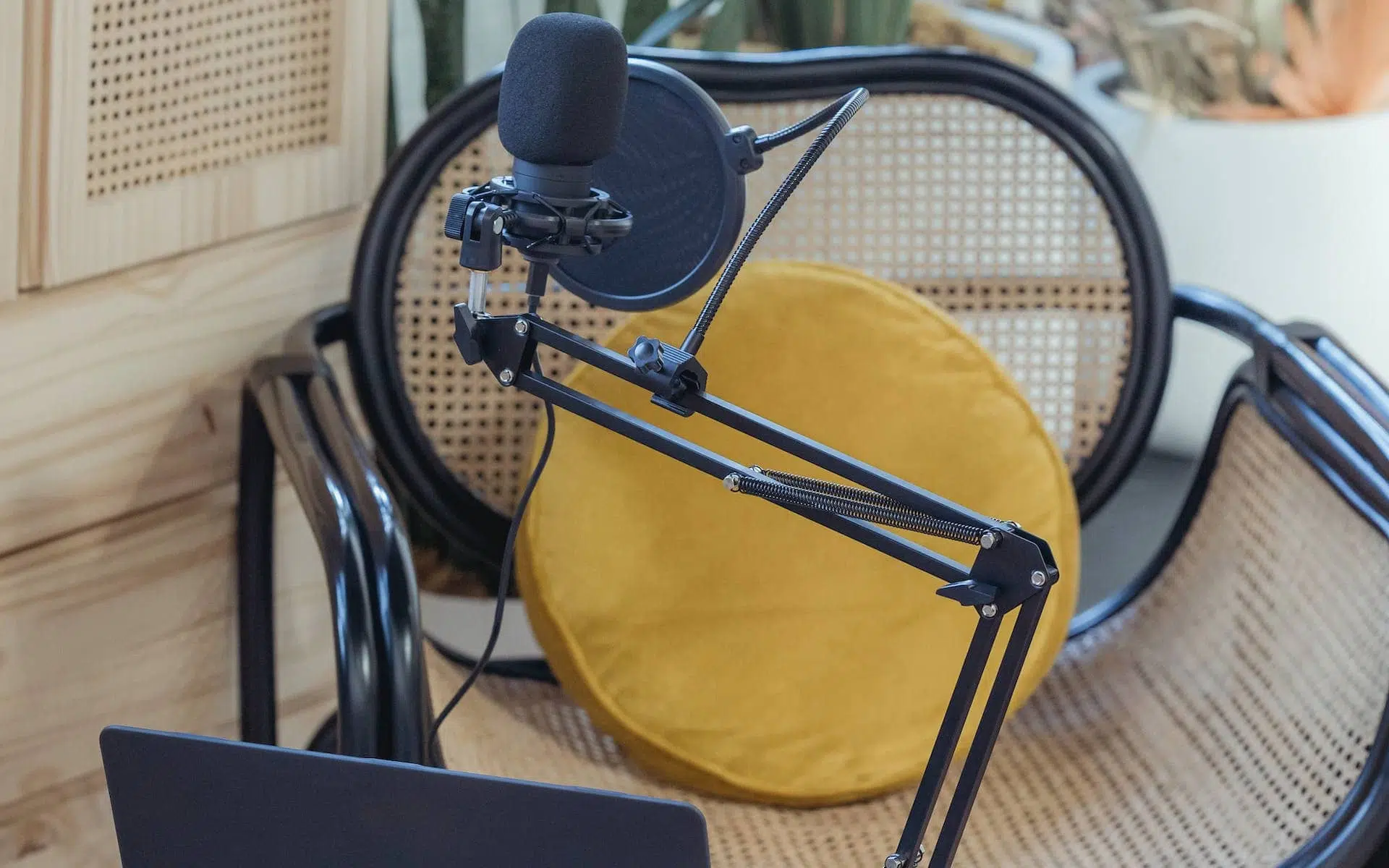Risk management is essential in Forex trading! The Forex market can often be unpredictable, and even successful traders must endure losing trades. One of the most important ways to protect your Forex trading account is by using stop-loss orders. Of course, the ability to automatically close a winning trade at a specific price is also crucial. A take-profit order is used to perform this task effortlessly. Let’s learn more about using stop loss and take profit orders...
What is a Stop-Loss Order?
With a buy (long) trade, a stop loss can be placed below the entry price at which the currency pair or other asset is bought. In this case, the stop loss order will automatically close (liquidate) the trade by selling it if the market price reaches the level at which the stop loss is placed.

With a buy (long) trade, your stop loss is placed below the entry price, with a take profit above the entry price. If the price declines and hits your stop loss, you will make a loss; if the price ascends to hit your take profit, you will make a profit. Conversely, a stop loss can be attached to a sell (short) trade, in which case it is placed above the entry price and automatically closes (liquidates) the trade with a buy action if the price level of the stop loss is reached.
 With a sell (short) trade, your stop loss is placed above the entry price, with a take profit below the entry price. If the price ascends and hits your stop loss, you will make a loss; if the price declines and hits your take profit, you will make a profit. Although a stop-loss order is generally an effective way to limit how much you can lose on a trade, there is no guarantee that your trade will close at the specific price at which your stop-loss is placed.
With a sell (short) trade, your stop loss is placed above the entry price, with a take profit below the entry price. If the price ascends and hits your stop loss, you will make a loss; if the price declines and hits your take profit, you will make a profit. Although a stop-loss order is generally an effective way to limit how much you can lose on a trade, there is no guarantee that your trade will close at the specific price at which your stop-loss is placed.
If market liquidity is thin or if there is a price gap, you could easily get a worse price than you expected. Of course, if positive slippage occurred, your stop-loss order could also be filled at a better price than you anticipated. Forex traders who carefully manage their risk and use acceptable amounts of leverage are unlikely to suffer notable losses due to price gaps that breach their stop-loss orders.
Before placing a trade, a trader needs to know how much money he is willing to lose on that particular trade. This amount will influence the lot size of the trade and, in some instances, the distance of the stop-loss in pips.
How do you calculate your Stop-Loss distance in pips?
Let’s say you’ve noticed a decent support or resistance area and want to place your stop-loss just below or above it at a certain price level. So, you have chosen the price level for your stop-loss, but you need to know how many pips it is away from your potential entry price. To do this, you have two options:
- For a long trade, subtract the stop loss value from the entry price. Then, divide this value by the pip value (denominated in the quote currency of that pair) to get the distance of your stop loss in pips. Here is an example on the EUR/USD:
Entry price: $1.00500
Stop loss: $1.00000
Entry price minus stop loss price = $0.005. The pip value in the US dollar (the quote currency) is 0.0001. Divide 0.005 by 0.0001, and you get 50. This is the distance of your stop loss in pips. For a short trade, subtract the entry price from the stop loss price and do the same calculation. If you’re not sure how to calculate the pip value (denominated in the quote currency) of a pair, you definitely need to read What is a Pip? Here, you will also learn how to calculate the pip value of any currency pair in the specific currency in which your trading account is denominated.
- A faster way to calculate the distance of your stop loss in pips is to use your trading platform’s ruler/crosshair tool to measure the distance. You might have to do a simple conversion from points to pips, depending on which trading platform you use. An example of where this is necessary is with the MT4 trading platform. For example, if you open a USD/JPY chart and measure a distance of 580 points with the ruler, you need to divide this number by 10 to get 58, which is the correct distance in pips. If you use a broker that supports the cTrader trading platform, the ruler will give you the correct distance in pips.
What is a Take Profit Order?
A take-profit order closes a trade automatically when the price of the traded asset reaches the price level at which the take-profit order is placed. Like a stop-loss order, a take-profit order is subject to potential positive or negative slippage. In certain instances, it may be preferred not to use a take-profit order. In this case, a trader would likely use a trailing stop loss to lock in his profit. Alternatively, the trader can close the trade manually at an optimal price and time. For more information regarding trailing stop losses, read How to Place My First Forex Trade. As displayed earlier in this guide, with a buy (long) trade, a take-profit order is placed above the entry price. With a sell (short) trade, it is placed below the entry price.
How do you place Stop-Loss and Take-Profit Orders?
With any Forex trading platform, you can attach stop loss and take profit orders to your trades and orders. You can attach it to any of the following:
- Market orders that are ready to be placed. When a market order (with a preset stop loss and take profit order) gets executed, the stop loss and take profit are instantly attached to the trade.
- Open trades initially placed without a stop loss and/or a take profit.
- Pending orders (including buy stop, sell stop, buy limit, and sell limit orders). When pending orders are set up, stop loss and take profit orders can be attached to it. Then, when the price reaches the pending order and activates it, the stop loss and take profit orders are instantly attached to the trade.
With the MT4 trading platform, you can open the order entry box by pressing F9 on your keyboard. Alternatively, you can right-click on the chart of your choice. Then select ‘Trading’, and then ‘New Order’. You will then see the following box on your screen:

Here you can enter all the parameters of your market or pending orders, including stop loss and take profit price levels (see the red boxes). To find some of the best MT4 brokers, take a look at MT4 Forex Brokers. We also have a omprehensive MT4 guide to get you started with MetaTrader 4 quickly.














 With a sell (short) trade, your stop loss is placed above the entry price, with a take profit below the entry price. If the price ascends and hits your stop loss, you will make a loss; if the price declines and hits your take profit, you will make a profit. Although a stop-loss order is generally an effective way to limit how much you can lose on a trade, there is no guarantee that your trade will close at the specific price at which your stop-loss is placed.
With a sell (short) trade, your stop loss is placed above the entry price, with a take profit below the entry price. If the price ascends and hits your stop loss, you will make a loss; if the price declines and hits your take profit, you will make a profit. Although a stop-loss order is generally an effective way to limit how much you can lose on a trade, there is no guarantee that your trade will close at the specific price at which your stop-loss is placed.



